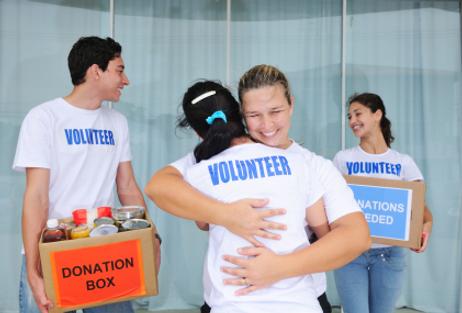Biology, algebra, English, and history classes may no longer be sufficient for your child to graduate. With today’s trend of increasing standards for graduation, many schools are mandating that students complete community service or stewardship prior to earning their caps and gowns. As a result, many teens are finding unique and engaging ways to become involved in their local areas.
Volunteer Requirements
Maryland, Chicago, and Los Angeles are just some of the locations across the country mandating volunteerism as a requirement for graduation. Specifically, as the Los Angeles Legislative Analyst’s Office reveals, all public school students must engage in at least 40 hours of community service with a nonprofit organization or government entity in order to receive a diploma.
Schools implementing this volunteer mandate are confident that students will benefit for both the short and long term. As students volunteer, they are exposed to different cultures, social settings, personal backgrounds, and new experiences. With these experiences, public students are able to add depth to their learning and development, which helps them both as teenagers and adults.
In contrast to the cities and states that require community service as a graduation requirement, some areas are instead simply requiring that public schools provide students with the option to engage in community service. For example, Mayor Bloomberg of New York City is one of the many city leaders across the country encouraging optional service opportunities for students. As the Daily News reports, Bloomberg is set to require all public school principals in the city to provide students with community service opportunities and venues. With approximately 1.1 million children in New York’s public schools, many community members believe that this step can be a force of incredible change for the city.
The Vision of Service
To guide public schools and students in their quest for enhanced community involvement, there is an array of organizations devoted to boosting volunteerism opportunities. For example, The Corporation for National and Community Service (CNCS) is a highly renowned organization that focuses on enhancing community areas with diverse and unique engagement activities. As CNCS reveals, “The mission of the Corporation for National and Community Service is to improve lives, strengthen communities, and foster civic engagement through service and volunteering.” While CNCS aims to achieve this mission through a variety of techniques and venues, one of the organization’s strong focuses lies in boosting young student volunteerism.
To ignite this effort, CNCS has created the “Learn and Serve America” project. This project specifically supports schools and higher education institutions to engage their students, teachers, and parents in various service-learning opportunities. With this approach, CNCS is confident that students are enhancing their development and cognitive skills, providing valuable comprehensive lessons through community service. As CNCS further articulates, “Service-learning is a method of teaching and learning that connects classroom lessons with meaningful service to the community. Students build academic skills while strengthening communities through service.”
According to CNCS, benefits of service learning include enhanced academic achievement, boosted student engagement and concentration, and improved civic skills. Adding to these personal benefits for each student, this movement can also help lead to an overall stronger community.
Does My Child Need to Volunteer?
If your teenager is in his or her junior or senior year of high school, then it is critical to know if community service is required in order to graduate. To find out more, check your child’s school website or be sure to attend your school’s PTSA meetings to learn about the latest updates and mandates. Although the service requirements in most areas are relatively new, many school leaders are considering implementing this change in the coming years.















